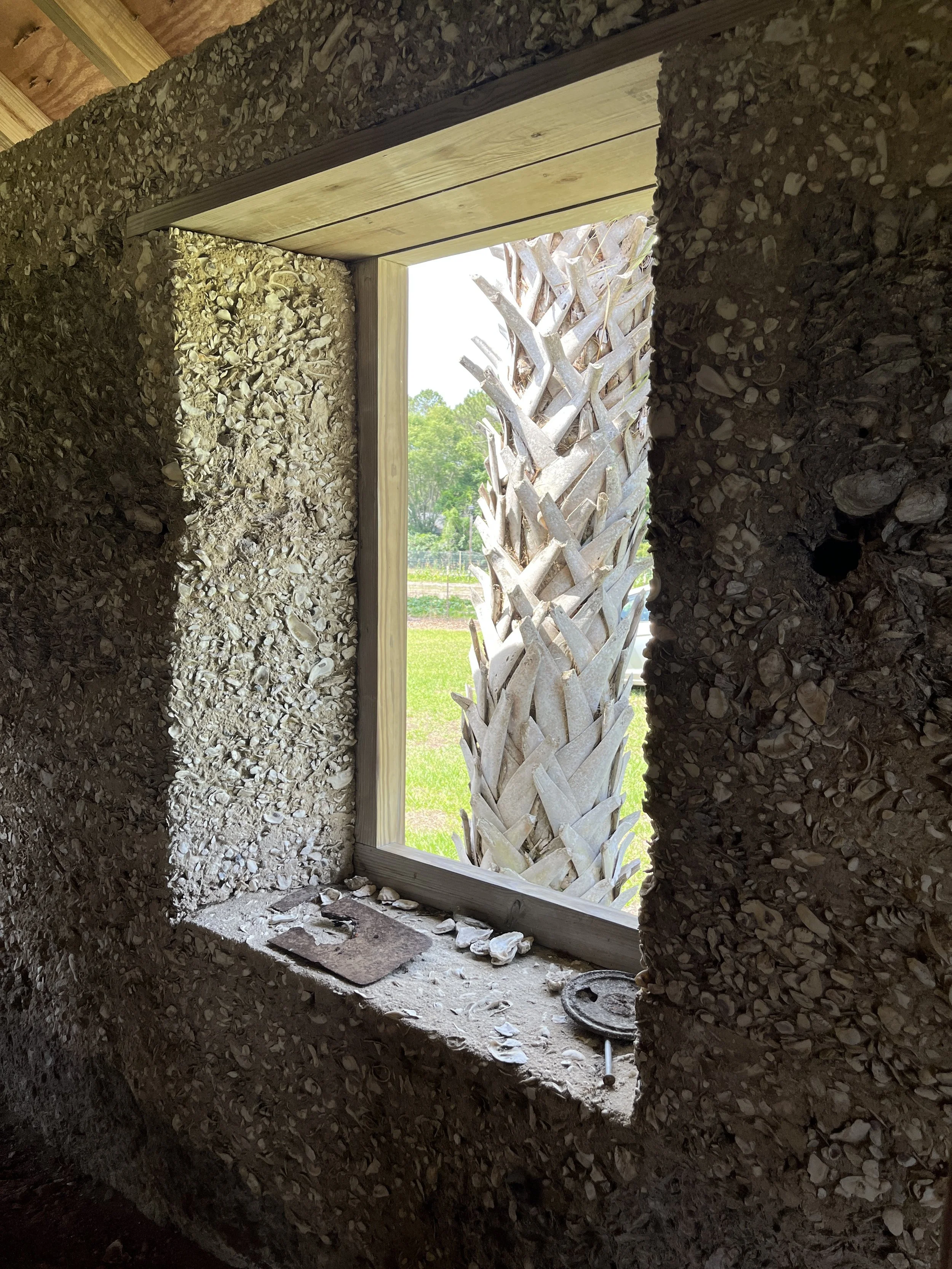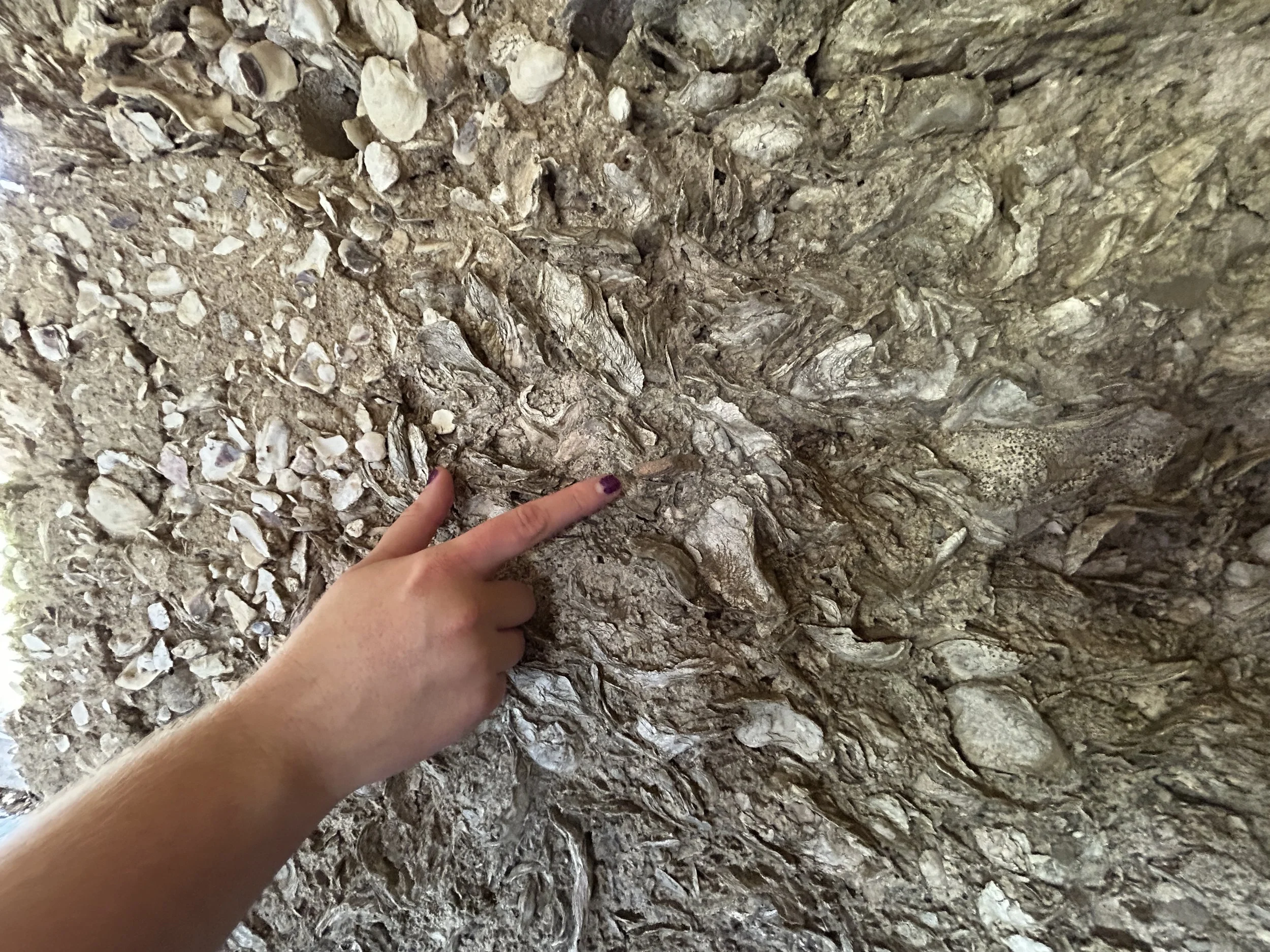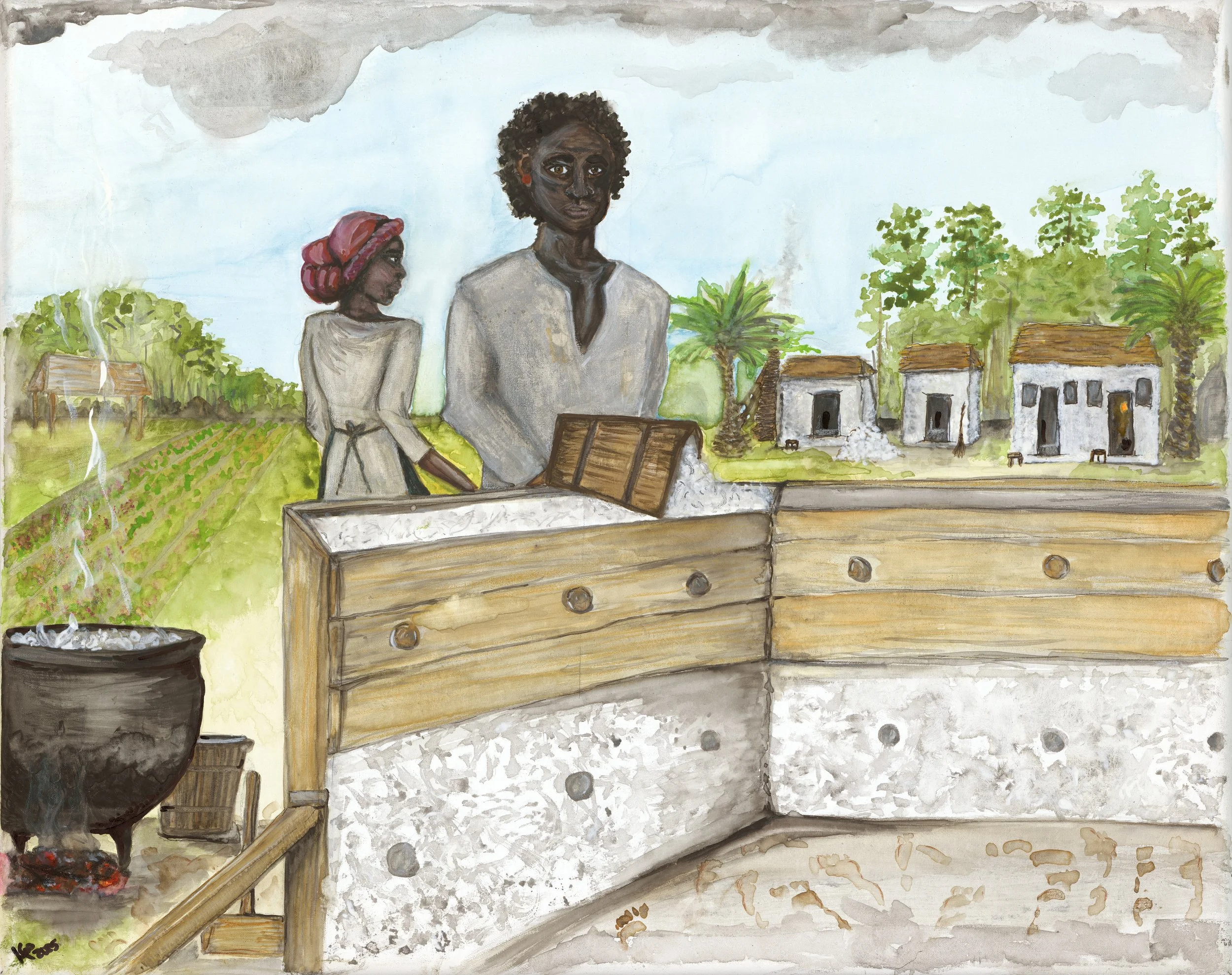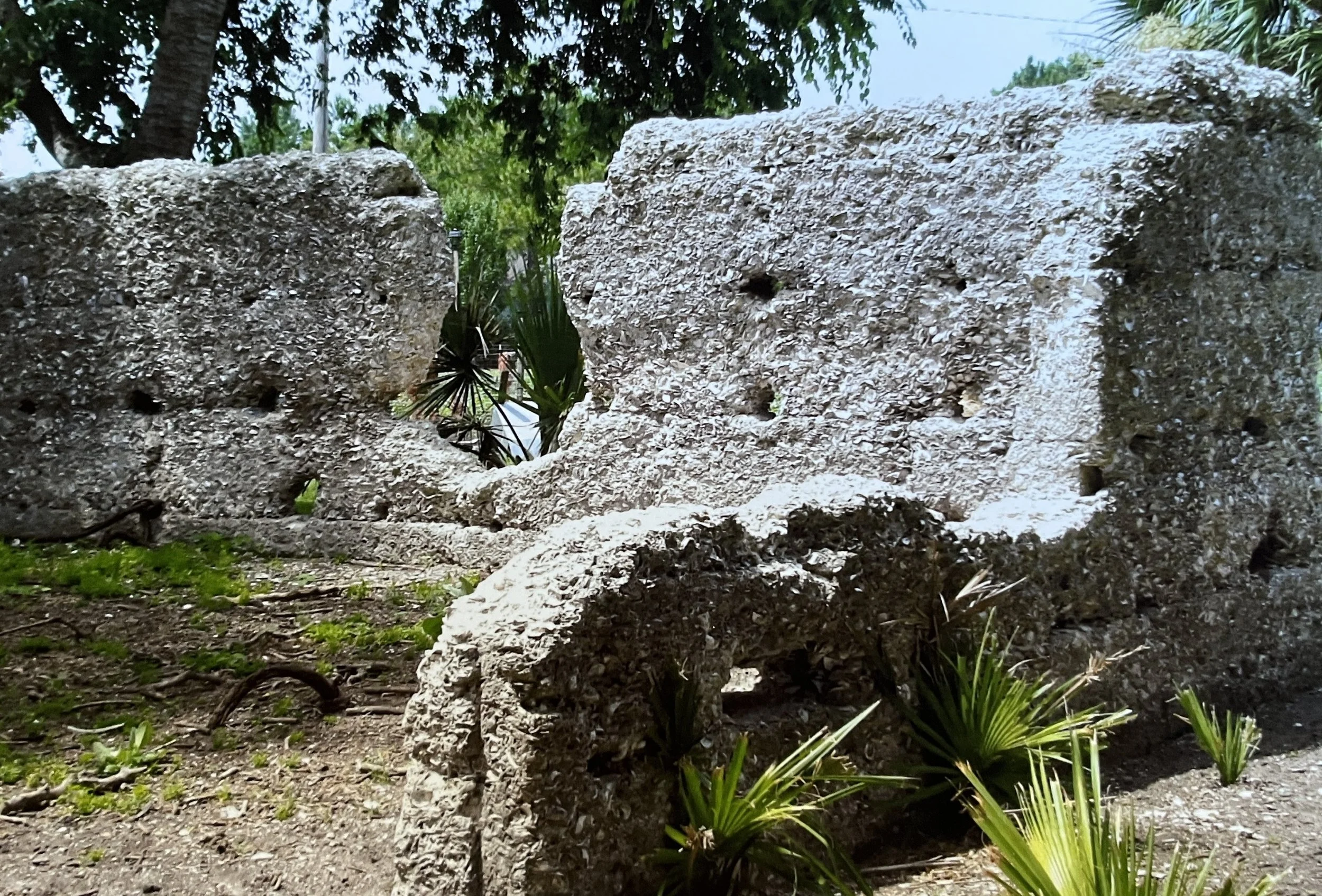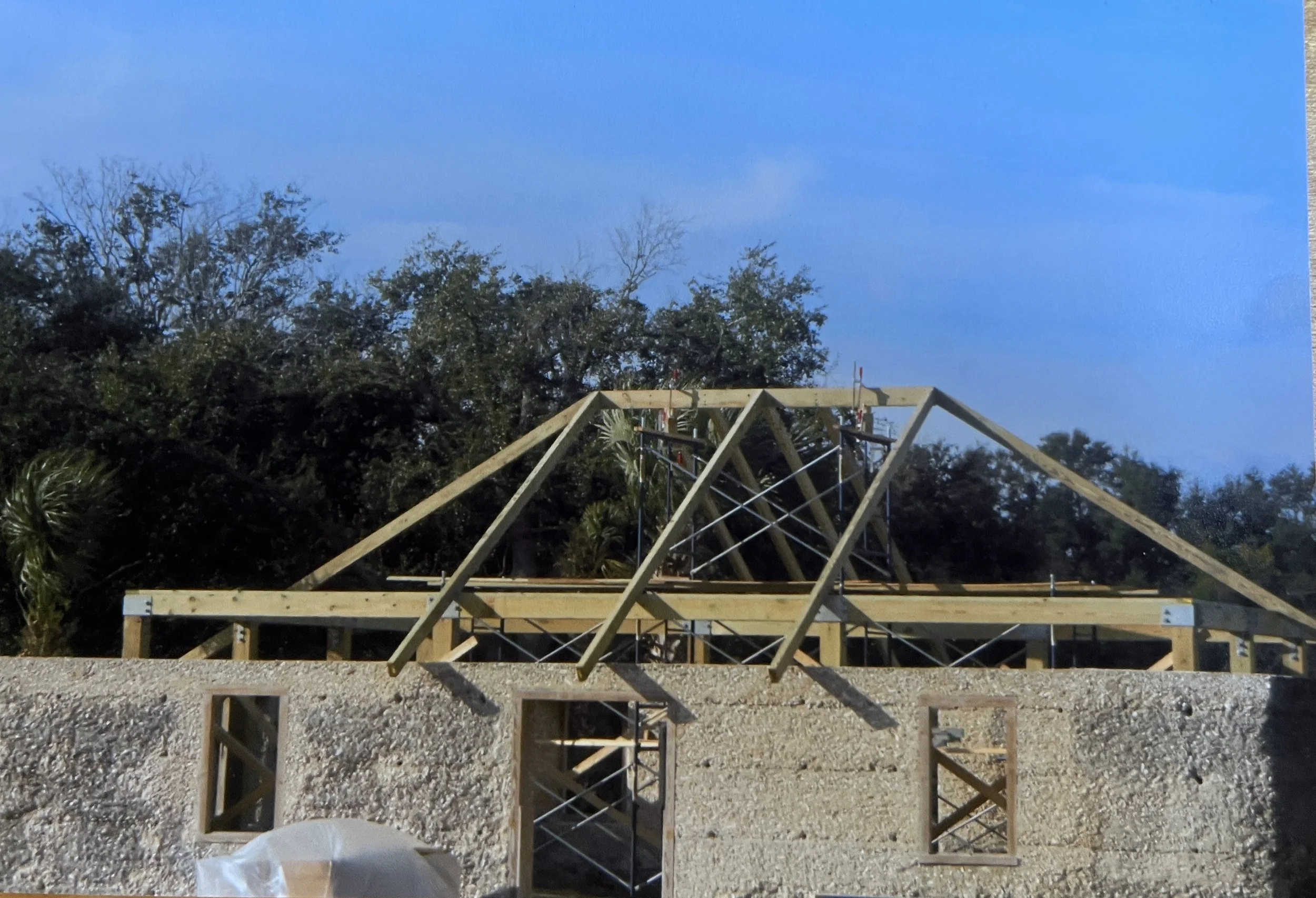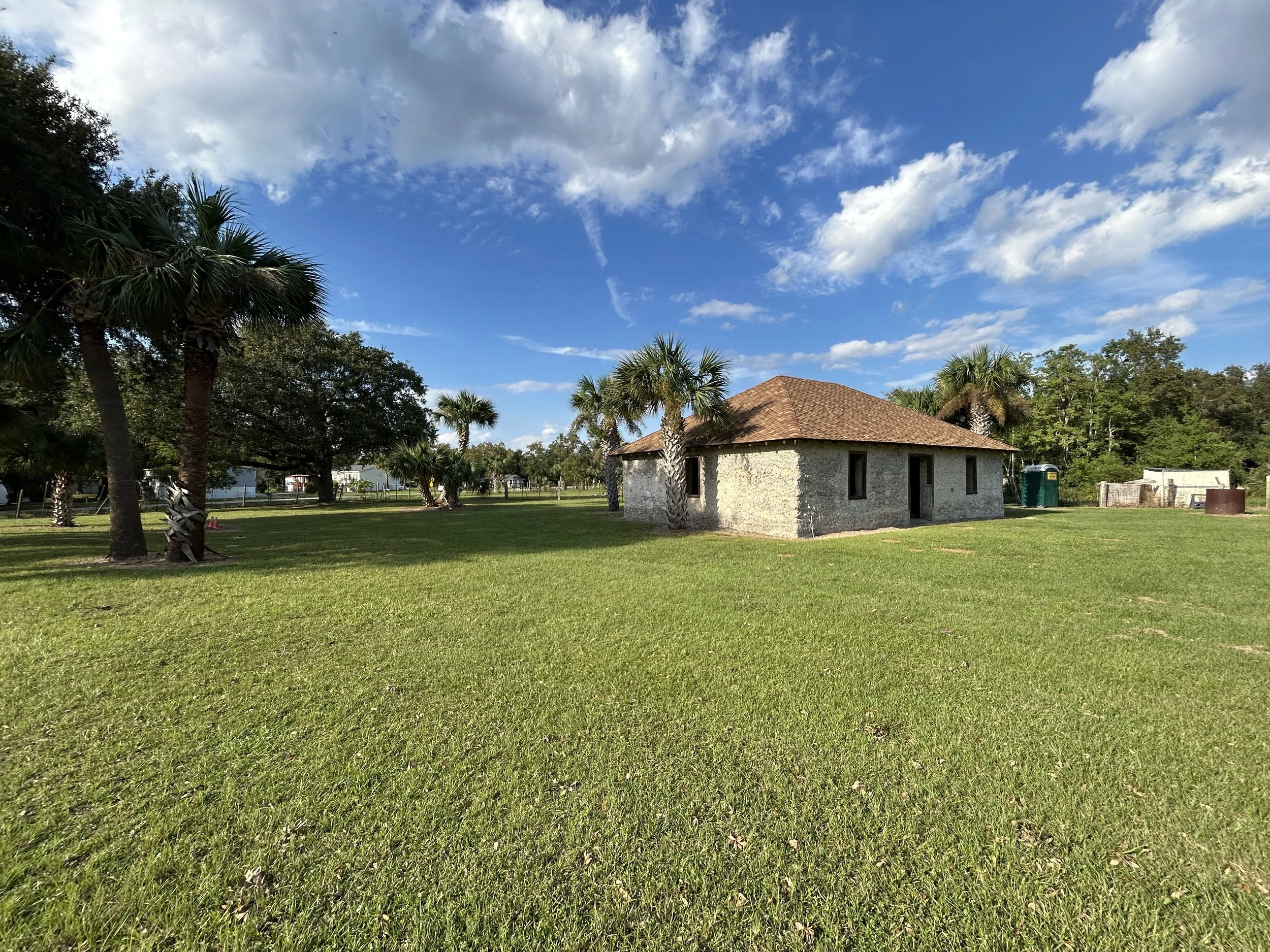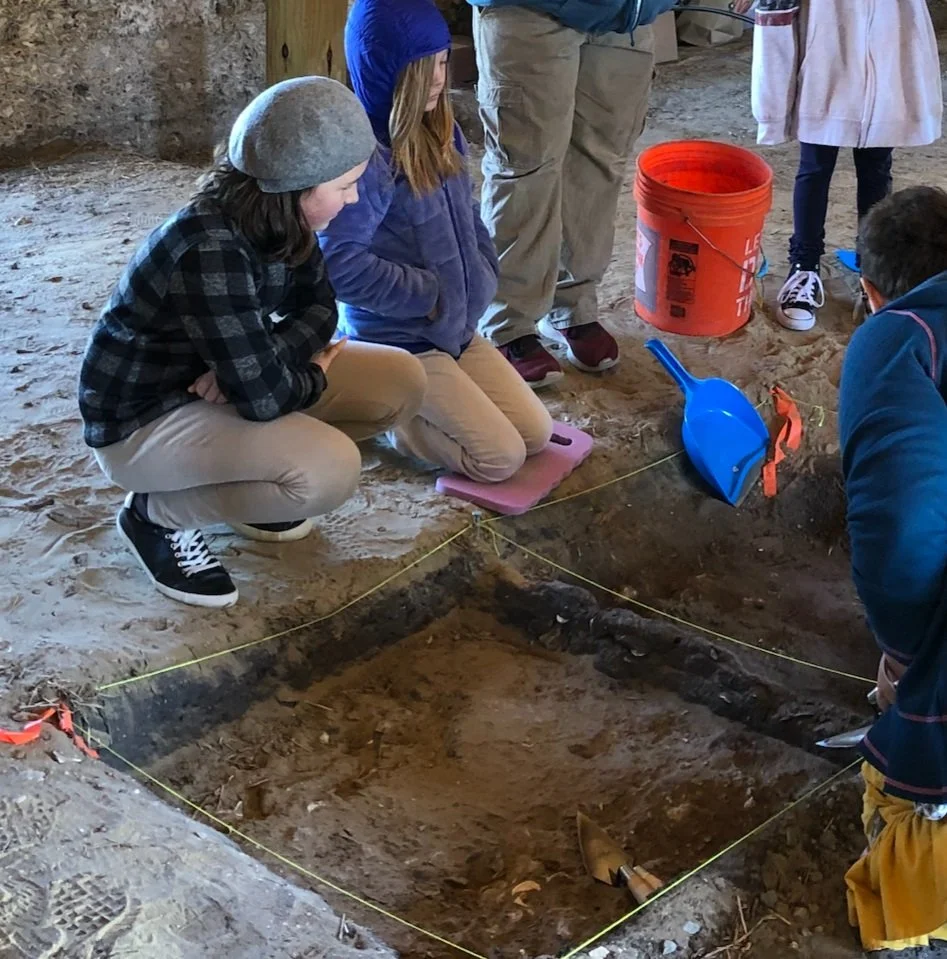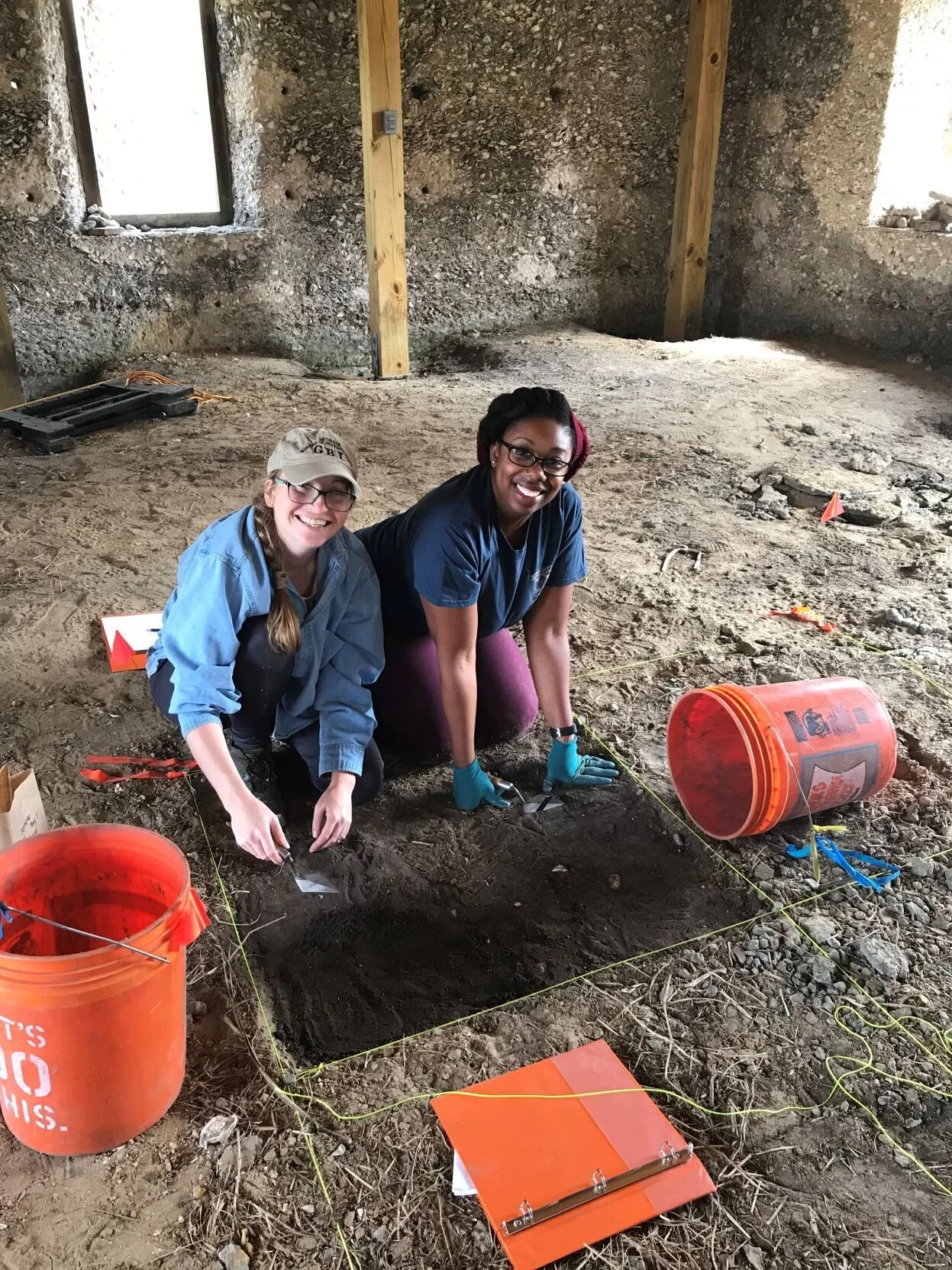
History Has Stories Yet to be Told
DISCOVER THE BARNWELL TABBY: Hilton Head Island's Oldest Pre-Revolutionary War Structure
The Barnwell Tabby
An Unearthed Chapter of Hilton Head's Past
Standing for nearly three centuries, this structure tells a story that's still revealing its secrets. Once thought to date from the 1800s, this north island landmark was actually built in the 1760s— predating the American Revolution and challenging earlier beliefs about Hilton Head Island’s colonial period.
What is the Barnwell Tabby?
Along a quiet stretch of Squire Pope Road stands a building that represents the beginning of colonial America on Hilton Head Island.
Built of "tabby"—a coastal building material made by mixing lime, water, sand, oyster shells, and ash—these walls tell many stories. Archaeological research reveals that the oyster shells came from ancient Native American shell middens (piles) nearby. At the same time, the construction techniques reflect West African building traditions brought by Africans forced into slavery along the Carolina coast.
The structure's age remained a mystery until recently. Using Optical Stimulated Luminescence — a technique that determines when sand grains last saw sunlight — researchers confirmed its mid-18th (mid-1700s) century origins, making it the oldest discovered structure on Hilton Head Island after the Native American shell rings.

Quick Links
What Makes The Tabby Special
-
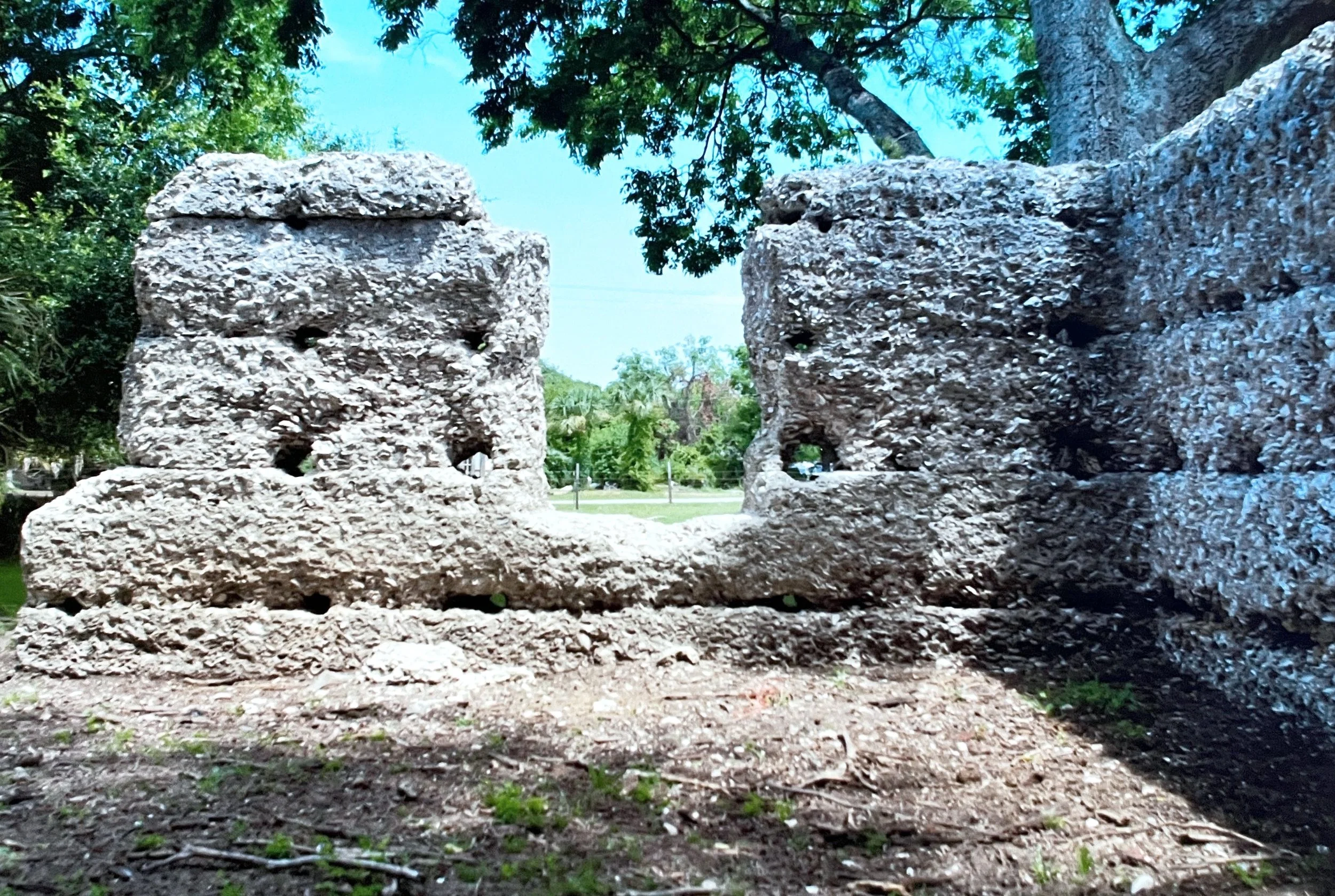
Much Older Than Expected
Recent research dates this building to the 1760s — not the mid-1800s as previously believed
-
Unique Window Design
Angled window frames might have provided a wider range of sight for defense
-
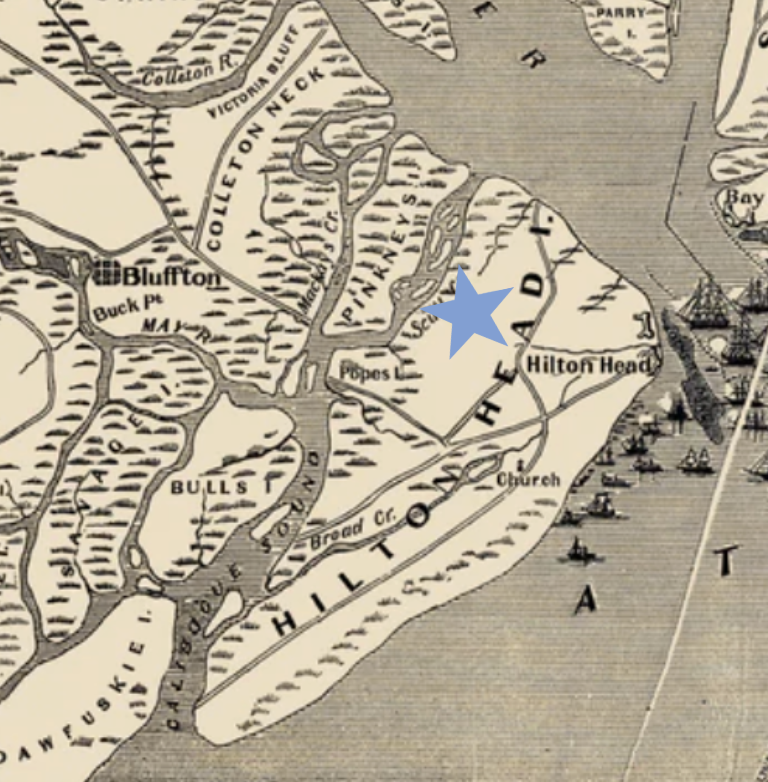
Strategic Location
Built near important waterways, perfectly positioned for farming, trading, or possibly defense
-
Ongoing Research
Questions continue to emerge about the Tabby’s original purpose and the people connected to it
PROUD TO PARTNER WITH:
When we refer to the Barnwell Tabby as "the oldest structure on Hilton Head Island," we are talking about structures built during the first years of European settlement.
The true oldest structures on Hilton Head Island are the Native American shell rings, which date back approximately 4,000 years and represent the remarkable engineering and community organization of the island's original inhabitants. These ancient shell rings deserve recognition and preservation alongside more recent historical structures like the Barnwell Tabby.
Ancient History
A Structure Full of Mysteries
When European settlers arrived on Hilton Head Island in the early 1700s, they encountered a landscape shaped by thousands of years of Indigenous people and communities. Following the Yamasee War (1715-1718), colonial expansion on the island intensified.
When the Yamasee War ended, European colonizers assumed control of the land, which by that point had been farmed by the Yamasee people and before that the Escamacu and Edisto. Plantations producing indigo and rice began to appear across the island in areas that had been Native American-farmed fields just years before. The lands were worked by African and Native American people who had been forced into enslavement.
The Barnwell Tabby was built during this period, and its primary purpose is still a mystery. It could have been:
An Early Plantation House: Archival research initially suggested that the tabby was a two-story antebellum residence. This was noted in 1973 when Dr. Robert L. Stephenson recorded the site during a road-development survey project.
Later on, Dr. Eric Plaag, a historian, determined that the Tabby was likely Henry Ladson’s plantation home, and on the Marabuoy Plantation property.
Like many coastal plantation homes of the era, it could have been a multi-story building with many smaller buildings close by (called out buildings) to function as the kitchen, smokehouse, and enslaved people’s homes. Recovered artifacts—fragments of fine pottery, glass bottles, and personal items—paint a picture of daily life for its inhabitants.
In the colonial period, a plantation house would have usually been used by a landowner while overseeing agricultural work, not for entertaining or family. Many plantation owners would have had more than one property, and spent time at all of them throughout the year.
This area of the island was a known colonial lookout location for militia (local landowners who operated as soldiers when necessary) during the Tuscarora War, Yamasee War, the Jenkins Ear War, the French and Indian War, the Cherokee War and the American Revolution.
Housing Many Stories
The property's history spans centuries. Initially, it was believed to have been part of Cotton Hope Plantation, but this theory was discredited when evidence revealed the tabby is much older than Cotton Hope Plantation (which was developed in the 1790s).
A newer theory is that Henry Ladson may have owned the property in the mid-18th century and called it Marabuoy Plantation. This is still being researched.
The Tabby sits only a few miles from Mitchelville, the first free Black town in the American South.
Current owner and primary caretaker Thomas Barnwell Jr.'s great-great-grandparents escaped enslavement from nearby Rose Hill Plantation to Mitchelville with their young children sometime around 1863 (middle of the Civil War).
In the 1930s, Thomas Barnwell Sr. purchased the land from Queen Smalls, but the property line went right through the middle of the tabby. The other half belonged to his cousins, Ruth and Cora Jones.
Tom Sr. died in 1971, and his wife, Hannah White Barnwell, assumed title to the property. Hannah transferred ownership to Barnwell Jr. in 1983.
Barnwell Jr. and Ruth Jones raised cattle on the adjoining properties after Cora Jones left for New York.
In 1991, the Jones’ heir, Bessie Orage, did a land swap, giving Barnwell Jr. full ownership of the Tabby and the ability to preserve it.
Preserving Our Shared History
The year 2009 marked the beginning of an extraordinary undertaking. After nearly three centuries of hurricane winds, punishing rains, and aging, the Barnwell Tabby was in ruins.
Thomas Barnwell Jr. decided to restore the Tabby.
The Barnwell family initiated and funded an ambitious restoration, bringing together experts who could breathe new life into the crumbling walls:
Architect Colin Brooker, renowned for his work with historic coastal structures, created a restoration plan honoring original construction methods
Tabby specialist Rick Wightman meticulously reconstructed damaged sections using historically appropriate materials
The team even sourced specific species of shells from Florida to match the original composition
As workers carefully stabilized the structure, something happened. Objects began emerging from the soil—fragments of colonial pottery, hand-forged nails, clay pipe stems, buttons, and tools. Each item offered a tantalizing glimpse into the lives of those who had occupied this space generations ago.
At Mr. Barnwell’s request, Dr. Kimberly Cavanagh, an anthropologist at the University of South Carolina Beaufort, assembled a research team that included archaeologist Dr. Audrey Dawson and historian Dr. Eric Plaag, to begin a systematic investigation of the site.
Their excavations yielded around 400 artifacts. Inside the building, they uncovered layers of prepared cement tabby floors beneath the soil, along with animal bones, charcoal, and pottery fragments.
Today, a specially designed pavilion roof protects the structure without compromising its historical integrity, ensuring this piece of history will continue to share its secrets with future generations.
Dr. Katherine Seeber of Carolina Community Archaeology is currently leading work to communicate these incredible stories and make them accessible to everyone
Unearthed Evidence Can Transform History
Hilton Head Island 1755
Here’s how:
The team corrected misunderstandings and local legends about Hilton Head.
Then created awareness of 18th-century (1700s) life, including how long slave-labor plantations existed on the island.
They collaborated with the town of Hilton Head Island and other organizations to promote the education of updated local history.
Artifacts found at the Tabby
Meet the Tabby Team
Meet a few of the dedicated citizens, archaeologists, historians, architectural specialists, students, Mitchelville descendants, and local organizations working to uncover the full story of the Barnwell Tabby. They all work to combine traditional field methods with cutting-edge technology and educational outreach, creating a more complete picture of this remarkable building and the people connected to it.
-
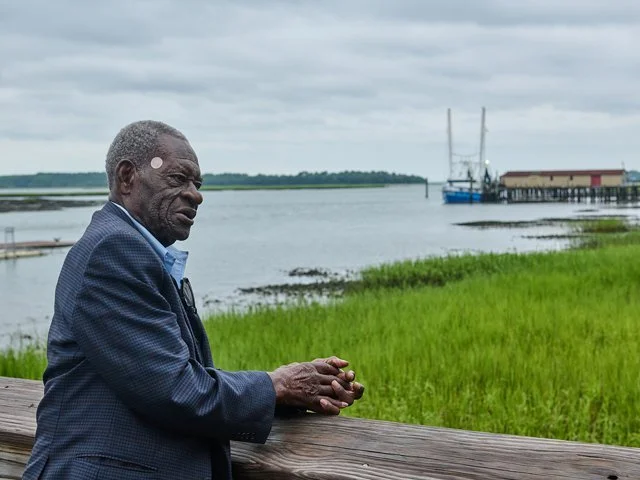
Thomas Barnwell, Jr.
Barnwell Tabby Property Owner, 5th Generation Descendant
-
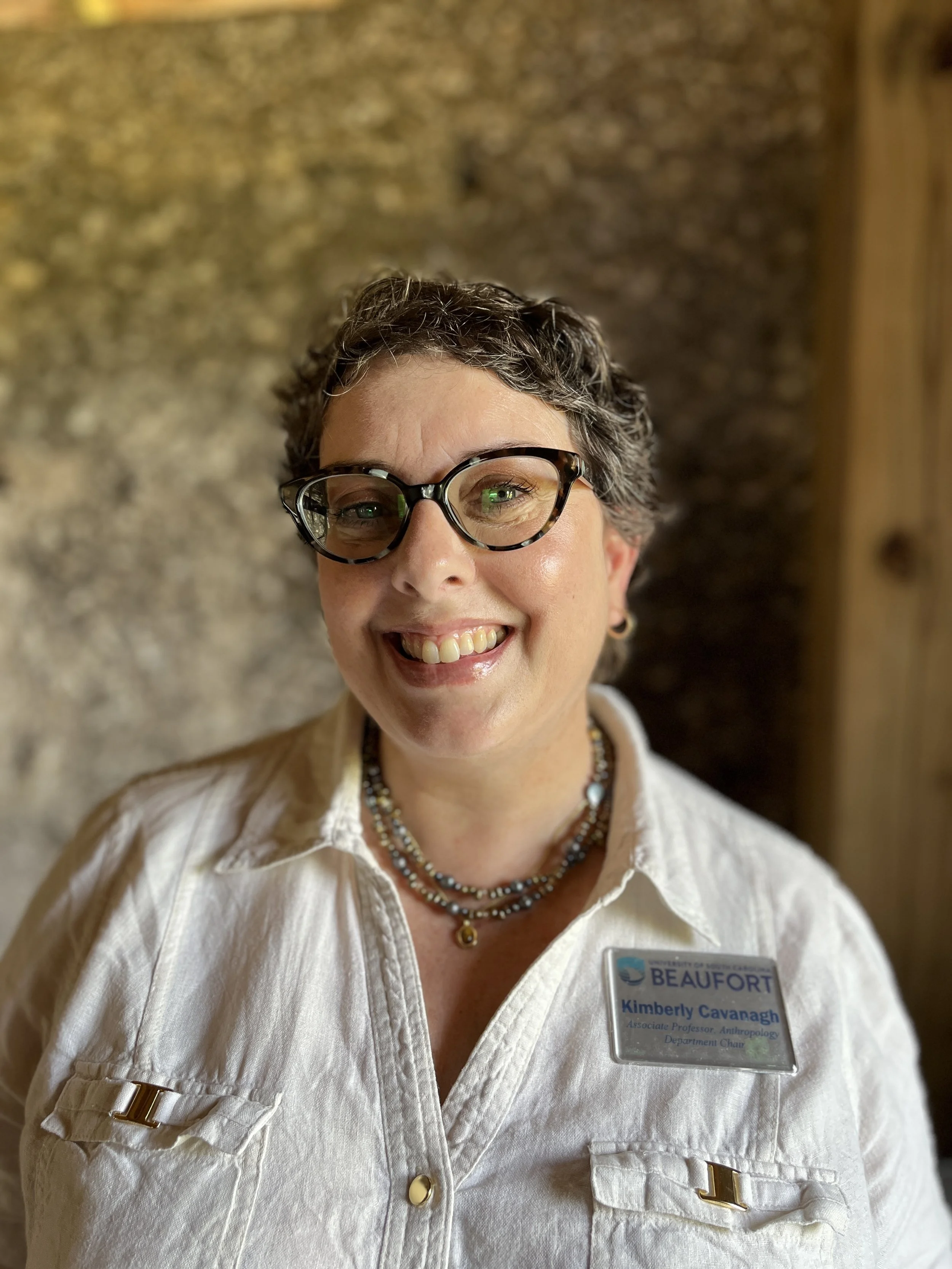
Dr. Kimberly Cavanagh
Associate Professor of Anthropology, University of South Carolina Beaufort
-

Dr. Eric Plaag
Research Team
-

Dr. Audrey Dawson
Adjunct Professor of Anthropology, University of South Carolina Beaufort
-
Rick Wightman
Adjunct Professor of Anthropology, University of South Carolina Beaufort
-
Colin Brooker
Architect, Tabby Expert
Meet the Barnwells
The Barnwell Tabby is an archaeological site that has been in the care of the Barnwell family for over eighty years. The care, preservation, and stewardship of this important historical resource has been fully conducted and largely financed by the Barnwell Family.
Thomas C. Barnwell, Jr. is a fifth-generation Hilton Head Islander, tracing his family’s history back to enslavement on Rose Hill Plantation. His great-great-grandparents, Ceasar and Mariah Jones, escaped to Mitchelville and later purchased 100 acres in what is now referred to as the Jonesville section of Hilton Head Island.
Thomas and Susan, his wife, are committed to creating community, honoring history, and empowering accessible education, all of which is what drives this project.
Some of their past work includes founding the Beaufort Jasper Comprehensive Health Center and championing sanitation systems for historically underserved communities.
The Barnwells believe in using this historic property as a tool for education and awareness, ensuring that all layers of Hilton Head Island's past are recognized and respected.
Thomas has been inducted into the Town of Hilton Head Island Hall of Fame and co-wrote Gullah Days: Hilton Head Islanders Before the Bridge.
Read more about Thomas’s background on The History Makers website.
VISIT the TABBY
Experience History Firsthand
Experience 300 Years of History
Though privately owned, the Barnwell Tabby welcomes scheduled groups who seek to understand Hilton Head Island's rich past and the diverse peoples who shaped it.
Educational visits offer:
Guided interpretation of the structure's architectural features
Insights into tabby construction techniques
Discussion of archaeological findings and their significance
Connections to broader themes in American history
The opportunity to stand where generations before have stood
The site accommodates school groups, historical societies, community organizations, and media teams interested in sharing this important story.
Contact us to arrange an educational visit that brings history to life for your group.
Resources for Educators & History Buffs
The Barnwell Tabby offers educators and history buffs a rare opportunity — a chance to engage directly with 300 years of American history through a single, tangible structure.
The Barnwell Tabby is bringing textbooks to life, allowing learners to:
Witness construction techniques that blend African, European, and Native American traditions
Understand how archaeologists use material evidence to reconstruct the past
Trace the complex patterns of ownership, labor, and land use that shaped coastal communities
Learn more about the enduring impact of the Gullah Geechee cultural heritage on the Carolina Lowcountry
We're in the process of developing classroom resources designed to spark curiosity and critical thinking:
Lesson resources aligned with state and national standards
Illustrated timelines connecting local developments to broader historical events
Primary source collections with guided analysis activities
Virtual tour options for remote classrooms
students assisting the excavation in 2020
The site has already welcomed hundreds of students, including nearly 200 third-graders who experienced the thrill of participating in actual archaeological fieldwork under professional guidance.
Join the Journey of Discovery
History isn't set in stone—it evolves as we uncover new evidence and perspectives. The Barnwell Tabby continues to reveal its secrets, with each discovery reshaping our understanding of Hilton Head's past.
Be part of this ongoing exploration:
Request a Tour for your class or organization
Explore The Historical Timeline to understand how this structure connects to our shared American story
LEARN MORE
Gullah Days
by Thomas Barnwell Jr.
The Gullah culture, though borne of isolation and slavery, thrived on the US East Coast sea islands from pre-Civil War times until today, and nowhere more prominently than on Hilton Head Island, SC.
Also available on Hilton Head at:
Grayco
Burke’s Pharmacy
Ace Hardware
Binya
Dockside
The Boathouse

Have a question or request? Please reach out!
PROUD TO PARTNER WITH:

